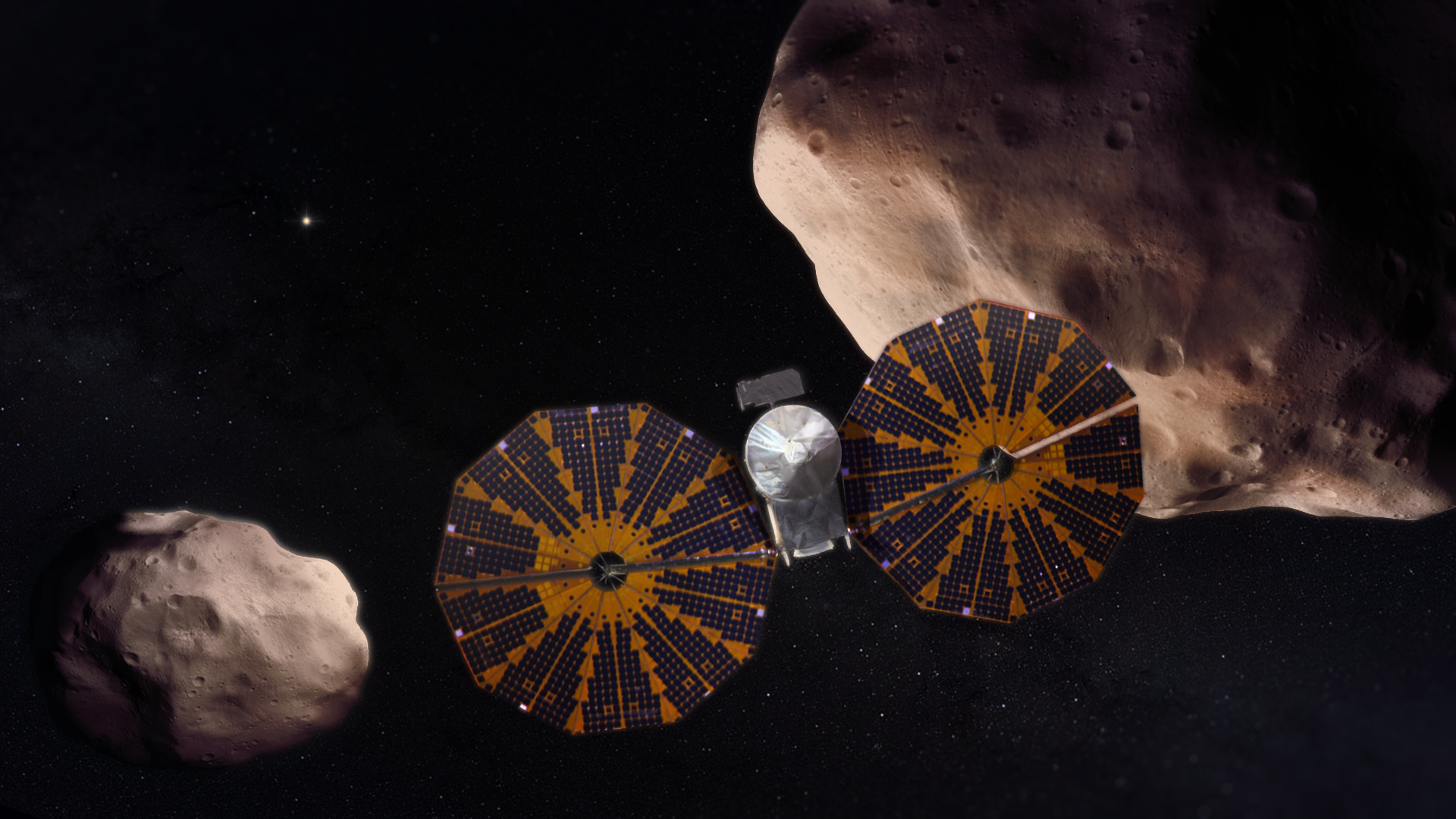The astronomer Rafael Bachiller reveals to us in this series the most spectacular phenomena of the Cosmos.
Topics of exciting research, astronomical adventures and scientific news about the Universe analyzed in depth.
Using one of the largest telescopes in the world (the VLT in Chile), very high quality images have been taken of 42 of the largest asteroids located in the belt between Mars and Jupiter.
These images allow us to study how the different bodies of the solar system were created.
Ceres and millions of asteroids
The successful launch of NASA's Lucy space probe on October 16 has brought asteroids to the fore. The main objective of this probe is to fly over several of the Trojan asteroids that are located in the orbit of Jupiter. In addition, on her way, Lucy will take the opportunity to fly over an asteroid of the so-called 'main belt'.
Located between the orbits of Mars and Jupiter, this main belt is a swarm of millions of rocky and metallic objects of very different sizes. The largest of them, Ceres, was considered a planet for almost half a century after its discovery in 1801. But in the 1850s, when other objects similar in size appeared, it was re-cataloged as a simple asteroid. Following the reclassification of the planets that took place in 2006, Ceres fell into the category of dwarf planets. (Thus, the descent of Pluto from the category of planets, which is causing so much talk, has not been the only one in history.)
Ceres is 950 kilometers in diameter and has reasonable spherical symmetry.
The next objects, by size, in the asteroid belt, are Vesta, Pallas and Hygieia.
But these are already much smaller, between the three they do not meet half the mass of Ceres, and they have more irregular shapes.
And the following are smaller and smaller, so that the mass of Ceres is one third of the total mass of all the objects in the belt, and this total mass is barely 4% of the mass of the Moon.
A mass too small to think that this belt was the result of the disintegration of a planet, as has sometimes been said.
Two families
The small size of asteroids makes it very difficult to get good images of them.
Thanks to visits from the Dawn and Rosetta spacecraft, Ceres, Vesta, and Lutecia had been observed in a high level of detail, but the existing images of the others were very poor.
About four years ago, Pierre Vernaza, from the Marseille Astrophysics Laboratory, began coordinating a team that has been taking precise images of some of the largest asteroids using a powerful telescope: one of the four Very Large Telescope (VLT) that ESO has installed in the Atacama desert (Chile).
So far, the team has taken images of 42 asteroids, 20 of them are larger than 200 kilometers and the smallest, Urania and Ausonia, are only about 90 kilometers each.
Orbits (not to scale) of some of the 42 asteroids ESO / M.
Kornmesser / Vernazza et al./MISTRAL algorithm (ONERA / CNRS)
Examining the images, astronomers have classified these asteroids into two families.
The first is formed by the almost perfectly spherical ones, like the great Ceres and Hygieia.
The second family is made up of those that are elongated, the prototype being Cleopatra, with its characteristic "bone for the dog" shape.
This bimodality in morphology seems to be linked to the difference in the rotation period observed between the two families.
Diversity
Next, the astronomers have compared the shapes of the asteroids with their masses. Thus they have found that the density is highly variable throughout the whole. The least dense, such as Lamberta and Sylvia, barely have densities of about 1.3 grams per cubic centimeter, while the most dense, such as Psyque and Kalliope, reach 4 grams per cubic centimeter, that is, their densities are higher. to those of diamond (3.5 grams per cubic centimeter).
These changes in density reflect very significant changes in chemical composition, a variety that is only explicable if the different asteroids formed in different regions of the protosolar system and then migrated to settle in the belt in which they are now.
Quite possibly, the lightest asteroids formed beyond Neptune's orbit and then suffered gravitational forces that drove them to their current position.
The origin of the solar system
So we see how these observations provide very valuable clues about the formation and history of asteroids.
These objects are relics from the formation of our solar system and their study can provide us with crucial information about our cosmic origins.
Recreation of the Lucy probe near Jupiter's Trojan asteroidsNASA
As we said, the Lucy space probe began its journey towards the orbit of Jupiter on Saturday, October 16, where it will fly over several of the Trojan asteroids that are there.
But your first goal of your mission will be to get good images of the main belt asteroid Donaldjohanson.
We will have to be patient, it will take Lucy more than three years to reach this first destination and we will have to wait until 2025 to see the first images.
The results of Vernazza and collaborators have been published just a few days ago in the prestigious European journal
Astronomy and Astrophysics
.
The scientific article entitled "VLT / SPHERE imaging survey of the largest main-belt asteroids: Final results and synthesis" can be consulted at this link.
____________________________________________________________________________
Rafael Bachiller is director of the National Astronomical Observatory (National Geographic Institute) and academic of the Royal Academy of Doctors of Spain.
According to the criteria of The Trust Project
Know more
See links of interest
The Palm
Last News
What
Holidays 2021
2022 business calendar
Home THE WORLD TODAY
The voice
Master Investigation Journalism
How to invest in cryptocurrencies
Torino - Genoa
Baskonia - AS Monaco
1. FSV Mainz 05 - FC Augsburg
Sampdoria - Spezia
Barça - Zenit Saint Petersburg

